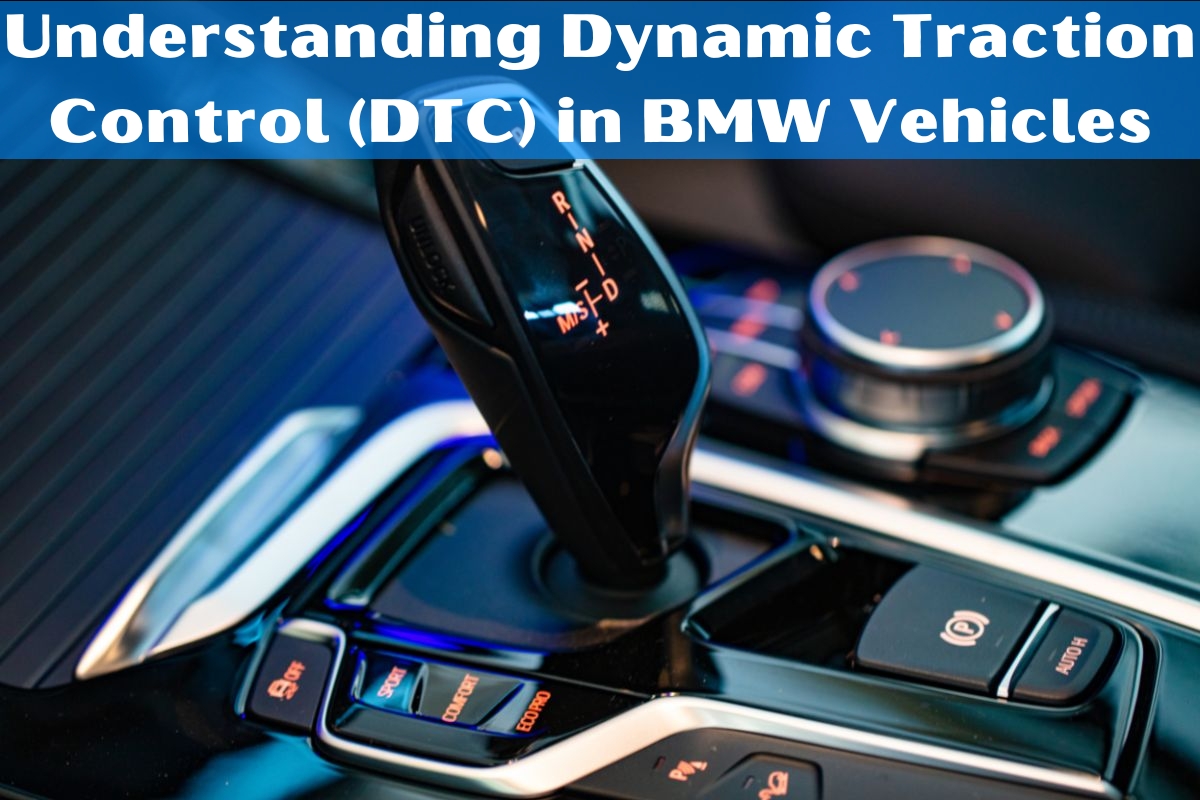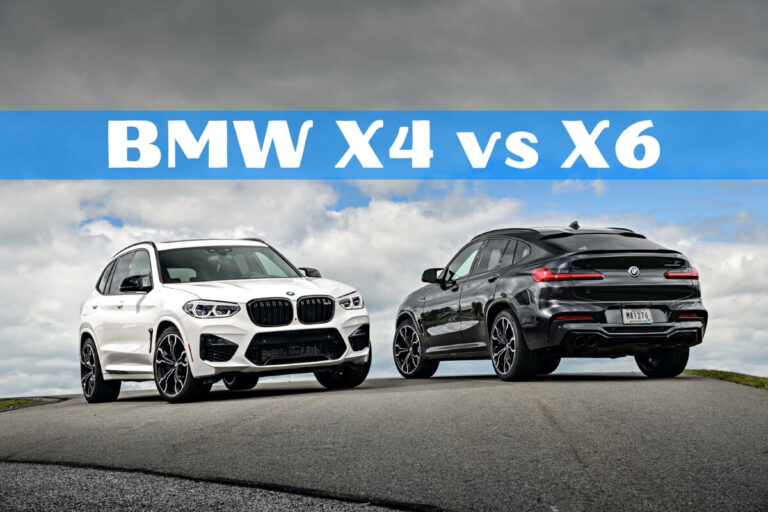Understanding Dynamic Traction Control (DTC) in BMW Vehicles

What is DTC in BMW?
Dynamic Traction Control (DTC) is a cutting-edge feature found in many BMW models that significantly enhances driving dynamics and road safety. DTC is a sub-function of the Dynamic Stability Control (DSC) system, and it can be activated or deactivated by the driver as needed.
At its core, DTC serves two primary purposes: regulating traction and enabling a more dynamic driving experience while still providing active stability control. By monitoring the speeds of the front and rear wheels and making real-time adjustments, DTC helps maintain optimal traction and control, particularly in challenging driving conditions.
The Role of DTC in Driving Dynamics
When the system detects a loss of traction, DTC automatically initiates stabilization measures. This includes reducing engine output and minimizing wheel slip to help the driver maintain control. DTC is especially useful on slippery surfaces like snow, ice, or mud, as it allows for a small amount of controlled wheel spin, which can actually improve traction and acceleration in these low-grip situations.
At the same time, DTC also enhances the dynamic driving capabilities of your BMW. When activated, the system loosens the traction control parameters, giving the driver more freedom to explore the vehicle’s handling limits. This can enable more spirited cornering, controlled drifts, and an overall more engaging driving experience, all while retaining the safety net of the stability control system.
DTC vs. DSC: The Difference Explained
To fully understand the role of DTC, it’s important to differentiate it from the Dynamic Stability Control (DSC) system. While the two are closely related, they serve distinct functions:
Dynamic Stability Control (DSC) is the primary system responsible for maintaining vehicle stability. It constantly monitors factors like steering angle, yaw rate, and wheel speeds, and it will automatically apply the brakes to individual wheels or reduce engine power to prevent skidding and keep the car on its intended path.
Dynamic Traction Control (DTC), on the other hand, is a sub-function of DSC that focuses specifically on regulating traction. DTC allows for a slightly higher degree of wheel slip, which can be beneficial in certain situations, while still ensuring that the vehicle remains stable and controllable.
In general, DSC is the more comprehensive and intrusive system, as it will intervene more aggressively to maintain stability. DTC, while still providing a safety net, offers the driver a bit more leeway to explore the limits of the vehicle’s performance and handling.
When to Use DTC in Your BMW
There are a few key instances when activating DTC can be particularly beneficial:
Driving on Slippery Surfaces: When navigating through snow, ice, mud, or other low-traction conditions, DTC can help you maintain control and momentum by allowing a small amount of wheel slip. This can prevent the wheels from becoming completely stuck and enable you to power through difficult situations.
Extracting Maximum Performance: For drivers who want to push their BMW’s handling capabilities to the limit, such as on a racetrack or tight, winding roads, DTC can provide a more dynamic and engaging driving experience. By allowing a bit more wheel spin, DTC can help the rear end “come alive,” enabling controlled drifts and more aggressive cornering.
To activate DTC in your BMW, simply press the DTC button, typically located near the center console or dashboard. This will illuminate the “DTC” indicator light, signaling that the system is now engaged. If you want to take things a step further and disable both DTC and DSC entirely, you can press and hold the DTC button for a few seconds until the stability control warning light comes on.
Safety Considerations with DTC
While DTC can greatly enhance the driving experience, it’s important to use the system responsibly and with caution. Even with DTC engaged, the vehicle’s stability control systems are still monitoring the situation and will intervene if they detect that the driver is losing control.
However, it’s crucial to understand that disabling both DTC and DSC completely (by pressing and holding the button) will remove all traction and stability assistance, leaving the driver fully in control of the vehicle. This level of freedom should only be used by experienced drivers in controlled environments, as it increases the risk of losing control, especially at higher speeds or on slippery surfaces.
As a general rule, it’s best to leave the systems engaged (no lights on the dashboard) for everyday driving, only using DTC or fully disabling the systems when the conditions and your skill level warrant it.
BMW Models with DTC
DTC is a feature found across a wide range of BMW models, from sedans and coupes to SUVs and sports cars. Some of the BMW vehicles equipped with Dynamic Traction Control include:
- BMW 3 Series
- BMW 5 Series
- BMW 7 Series
- BMW X3
- BMW X5
- BMW X6
- BMW Z4
- BMW M3
- BMW M5
The implementation and specific capabilities of DTC may vary slightly between different BMW models and model years, so be sure to refer to your owner’s manual or consult with a BMW specialist to understand the DTC features in your particular vehicle.
Troubleshooting DTC Issues
While DTC is a generally reliable and robust system, there are instances where it may malfunction or display error codes. Some common DTC-related issues include:
DTC Failure: If the DTC system is not functioning correctly, you may see a warning light on your dashboard, indicating a “DTC Failure” or a related diagnostic trouble code (DTC). This could be caused by a variety of factors, such as faulty sensors, wiring problems, or issues with the engine control unit (ECU).
Wheel Speed Sensor Malfunction: DTC relies on the wheel speed sensors to monitor and compare the rotational speeds of the front and rear wheels. If one or more of these sensors is malfunctioning, it can disrupt the DTC’s ability to function properly.
ECU Programming Issues: In some cases, problems with the ECU’s programming or software updates can lead to DTC-related issues. This may require a visit to a BMW service center for diagnosis and potential reprogramming or software updates.
If you encounter any DTC-related problems, it’s best to have your vehicle inspected by a qualified BMW technician who can properly diagnose and resolve the issue.
Customizing DTC Performance
While the default DTC settings in your BMW are designed to provide an optimal balance of performance and safety, some drivers may wish to fine-tune the system’s behavior to suit their specific driving preferences.
Many BMW models offer the ability to adjust the DTC settings through the vehicle’s iDrive system or other controls. This can include tweaking parameters such as the degree of wheel slip allowed, the aggressiveness of the traction control intervention, and the balance between dynamic performance and stability.
By integrating DTC with other BMW performance features, such as suspension tuning, engine modifications, or even dedicated driving modes, drivers can create a truly personalized driving experience that caters to their individual needs and preferences.
The Evolution of DTC in BMW
Dynamic Traction Control has been a part of BMW’s engineering philosophy for many years, with the technology first making its debut in the late 1990s. Over the decades, DTC has evolved significantly, with each new generation offering improved sensors, faster processing power, and more sophisticated algorithms to provide an even more seamless and effective traction control system.
As BMW continues to push the boundaries of vehicle dynamics and performance, the role of DTC has also expanded. The system is now more closely integrated with other advanced technologies, such as all-wheel-drive systems, electronic limited-slip differentials, and even torque-vectoring capabilities, to deliver an unparalleled driving experience.
Looking to the future, it’s likely that DTC will continue to play a crucial role in BMW’s pursuit of driving excellence. As autonomous and advanced driver assistance technologies become more prevalent, DTC will likely evolve to work in harmony with these systems, ensuring that the driver remains in full control while still benefiting from the safety and performance advantages that Dynamic Traction Control can provide.
Conclusion
Dynamic Traction Control is a remarkable example of BMW’s commitment to engineering vehicles that not only deliver exceptional performance but also prioritize safety and driver engagement. By carefully balancing the line between traction control and dynamic handling, DTC empowers BMW drivers to push the limits of their vehicles while maintaining a secure and confident driving experience.
Whether navigating treacherous winter conditions or carving through winding roads, DTC is a testament to BMW’s dedication to pushing the boundaries of what’s possible in the automotive world. As you explore the capabilities of your BMW, be sure to familiarize yourself with the DTC system and how it can enhance your driving adventures, all while keeping you firmly and safely in control.






